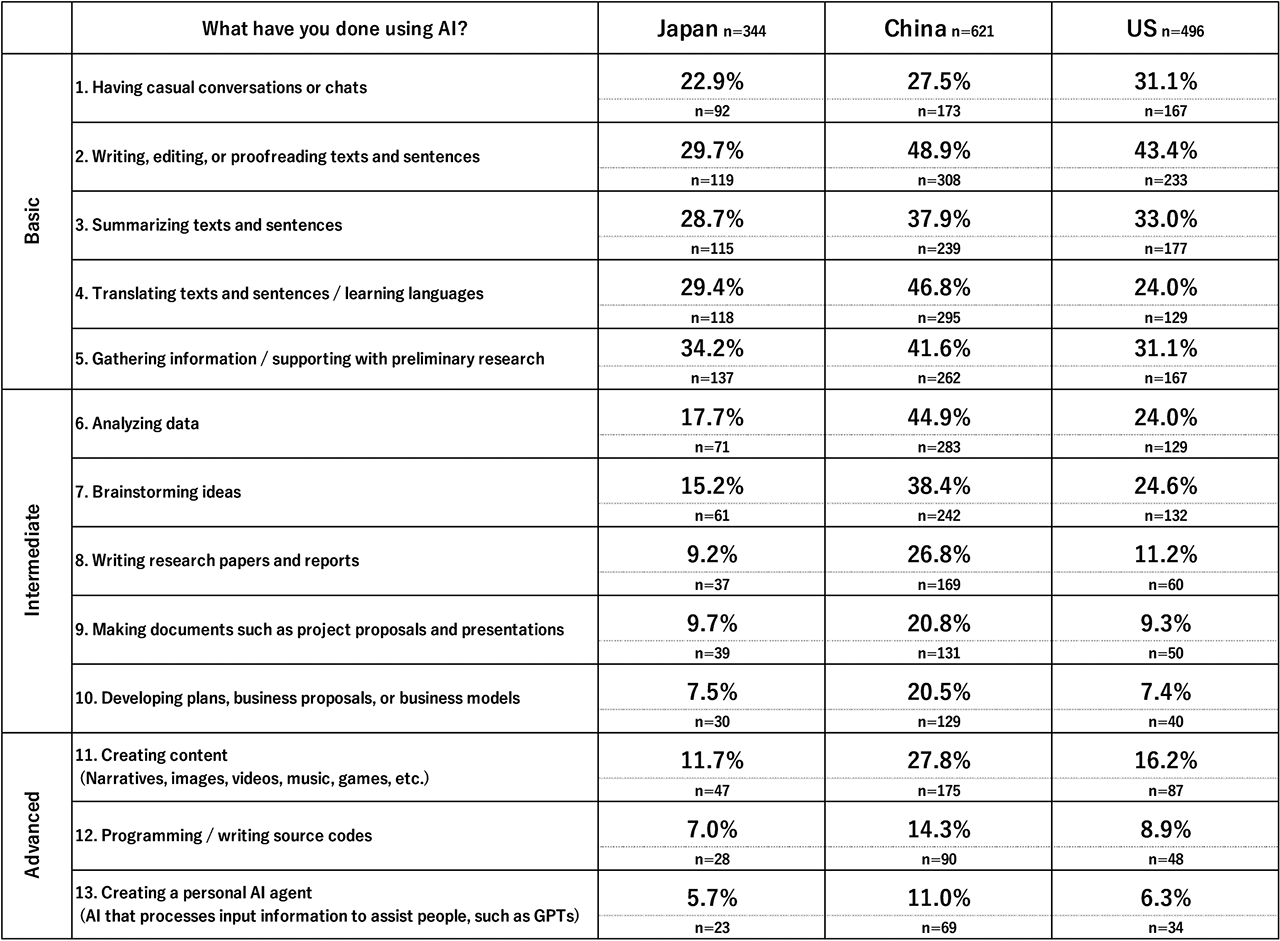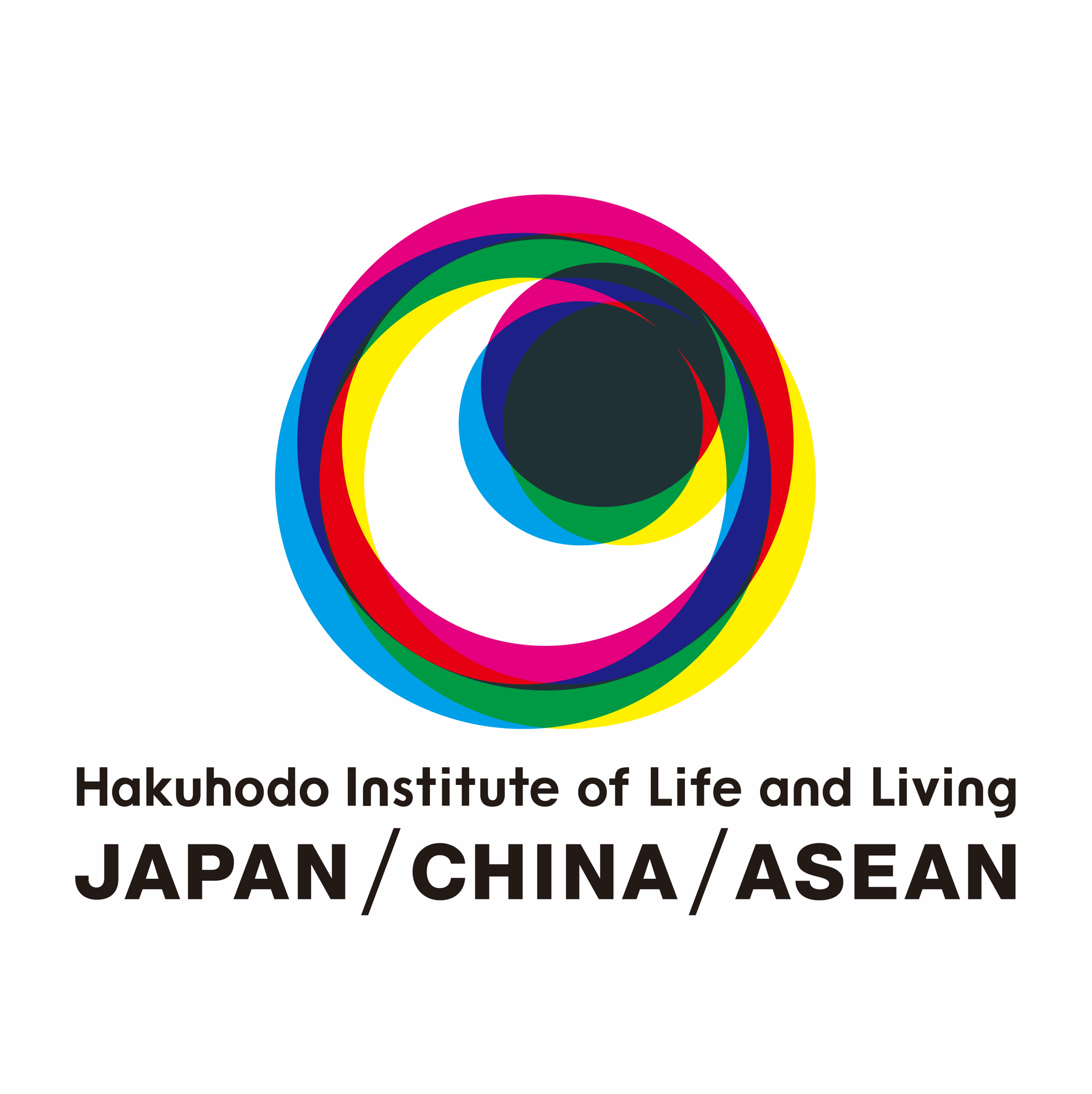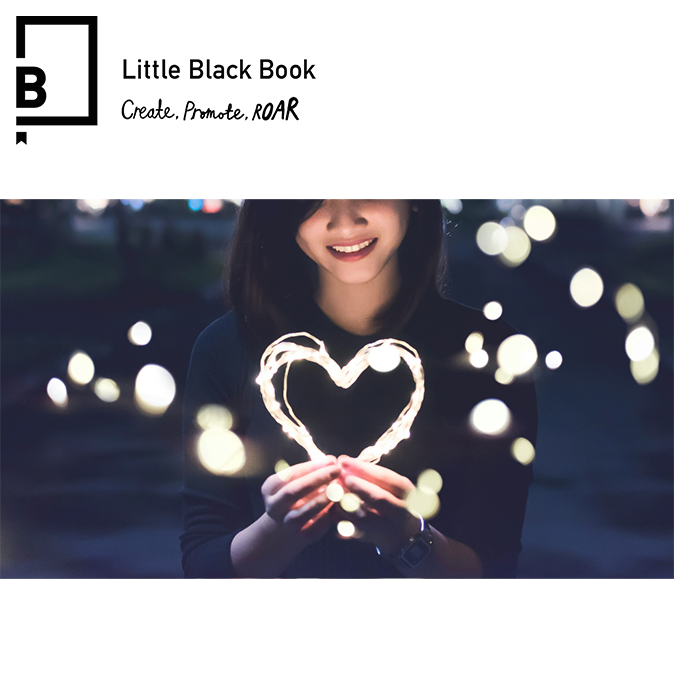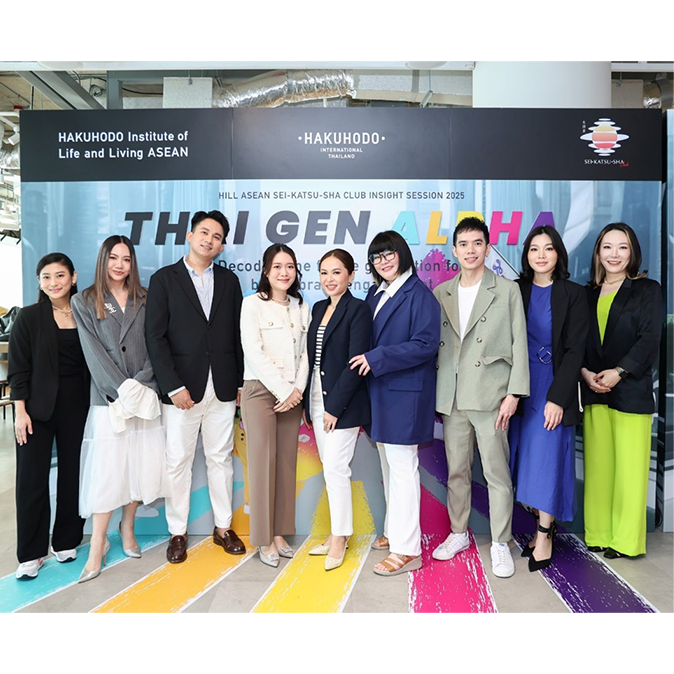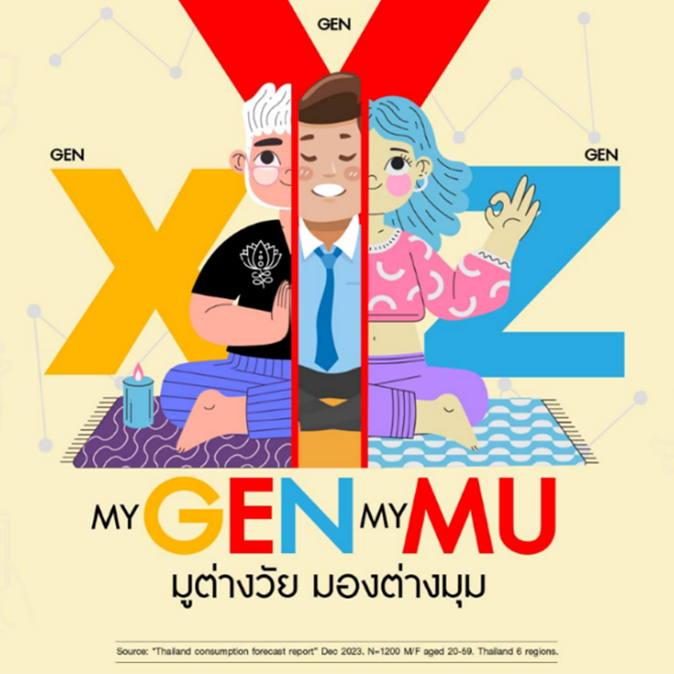- News
- Research
Tokyo―July 15, 2025―UNIVERSITY of CREATIVITY (UoC) is a research institution and platform established by Hakuhodo Inc., an integrated marketing and innovation company headquartered in Tokyo. UoC explores, experiments with, and cultivates creativity in an interdisciplinary manner—across generations and specialties―to reshape the future. UoC’s core philosophy is “We are ALL Born Creative.” With the goal of gaining a comprehensive understanding on the value of creativity in the AI era on a global scale—how it is perceived and the impact it has on the society—UoC conducted its Global Creativity Survey in Japan, China, and the United States. The major findings of this online survey of 2,115 respondents including male, female, and other people aged 15 and over will be shared below.
Summary of Survey Results
Do you consider yourself to be “creative”?
・24.8% answered yes in Japan, more than 50 points lower than in China and the United States.
Self-perception of creativity vs Level of AI use
・Those who perceived themselves to be creative used AI in a more advanced manner.
How do you feel about AI?
・Japan: somewhat cautious, China: high hopes as a partner for value creation, United States: opposing opinions―both hopes and fears.
What comes to mind when you hear the word “creativity”?
・In all three countries, “Turning ideas into reality,” “Creating something unprecedented,” and “Discovering new theories or methods” ranked high.
In which areas should “creativity” be utilized / implemented more?
・In Japan and the United States, “Education / Learning” ranked highest, in China, “Development and utilization of AI” ranked highest.
Going forward, UoC will increase the number of countries surveyed, and conduct a fixed-point observation survey on an annual basis to objectively track and analyze the evolving role and trajectory of creativity in the AI era. The value of creativity will be explored and discussed, taking into account subconscious mindsets and cultural background of each country. The findings of the survey will be published as a Creativity White Paper to be openly shared with society.
Global Creativity Survey Overview
Purpose
This survey was conducted to explore on a global scale the value, trajectory, and social impact of creativity in the age of AI. Going forward, UoC will be launching its annual Global Creativity Survey, with more countries surveyed. Through long-term time-series analysis, UoC aims to continuously track differences and changes in the perception and value of creativity across countries.
Survey areas
・Japan (Tokyo, Osaka)
・China (Beijing, Shanghai)
・United States (New York State, California State)
Sample size
Total: 2,115 (Japan: 710, China: 700, United States: 705)
Respondents
・Age: 15 years old and older
・Gender: Male / Female / Other

Survey period
March 12–23, 2025
Survey method
Online survey
Survey design & analysis
UNIVERSITY of CREATIVITY (UoC)
Implementation & aggregation
INTAGE Inc.
UNIVERSITY of CREATIVITY (UoC)
UoC is a research institution and platform specialized in creativity, established by Hakuhodo Inc. in September 2020. At UoC, creativity is researched, developed, and implemented as a technology and tool for future creation. Under its philosophy, “We are ALL Born Creative,” UoC aims to reframe creativity as humanity’s greatest capital in this era of rapidly advancing AI and big data and seeks to become a “port of creativity” for mapping a new civilization. Transcending the boundaries between arts and sciences, governments, businesses, and academia, UoC fosters interdisciplinary research and experimentation on creativity to generate innovative solutions to today’s global challenges and give birth to new sources of inspiration.
Website: https://uoc.world/
Detailed Survey Results
(1) Do you consider yourself to be “creative”? (All age groups)
The percentage of respondents who considered themselves to be creative is significantly lower in Japan—more than 50 points below China and the United States (I strongly think so + I think so + I somewhat think so).
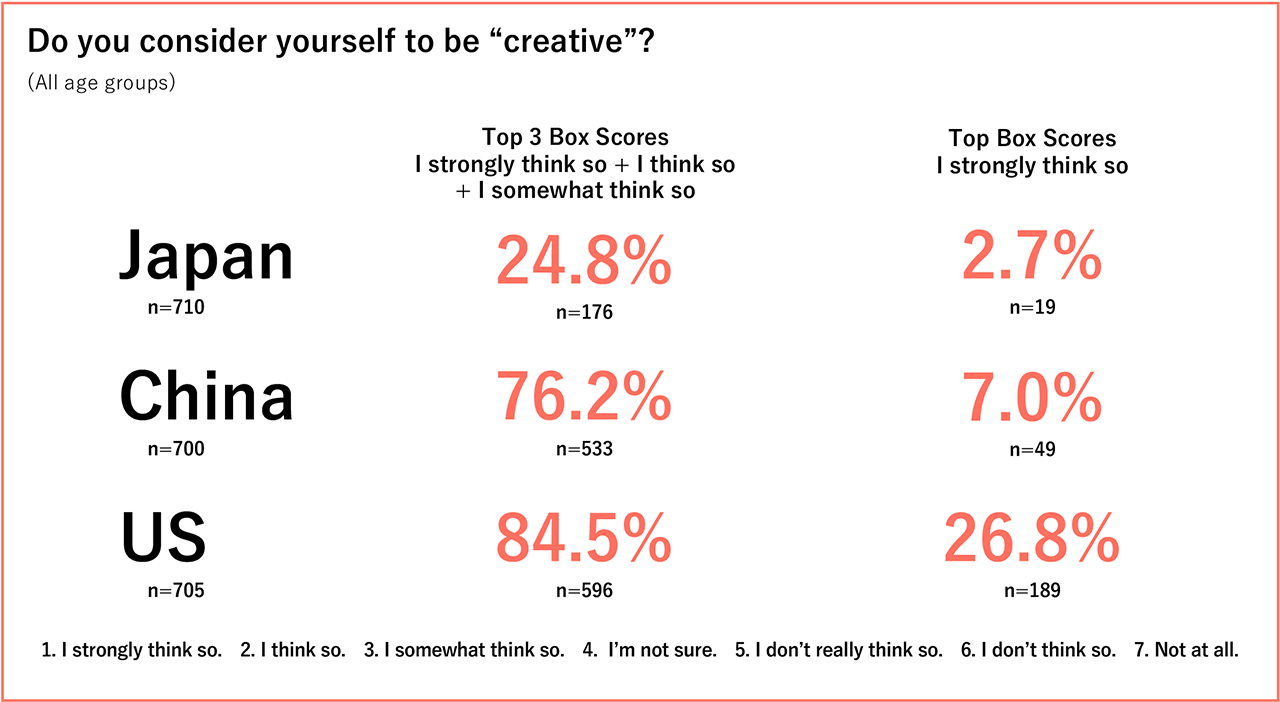
(2) Self-perception of creativity vs Frequency of AI use
There was a positive correlation between those who perceived themselves as creative and those who frequently used AI. This was particularly notable in China, where the relationship appears to be a structural phenomenon.
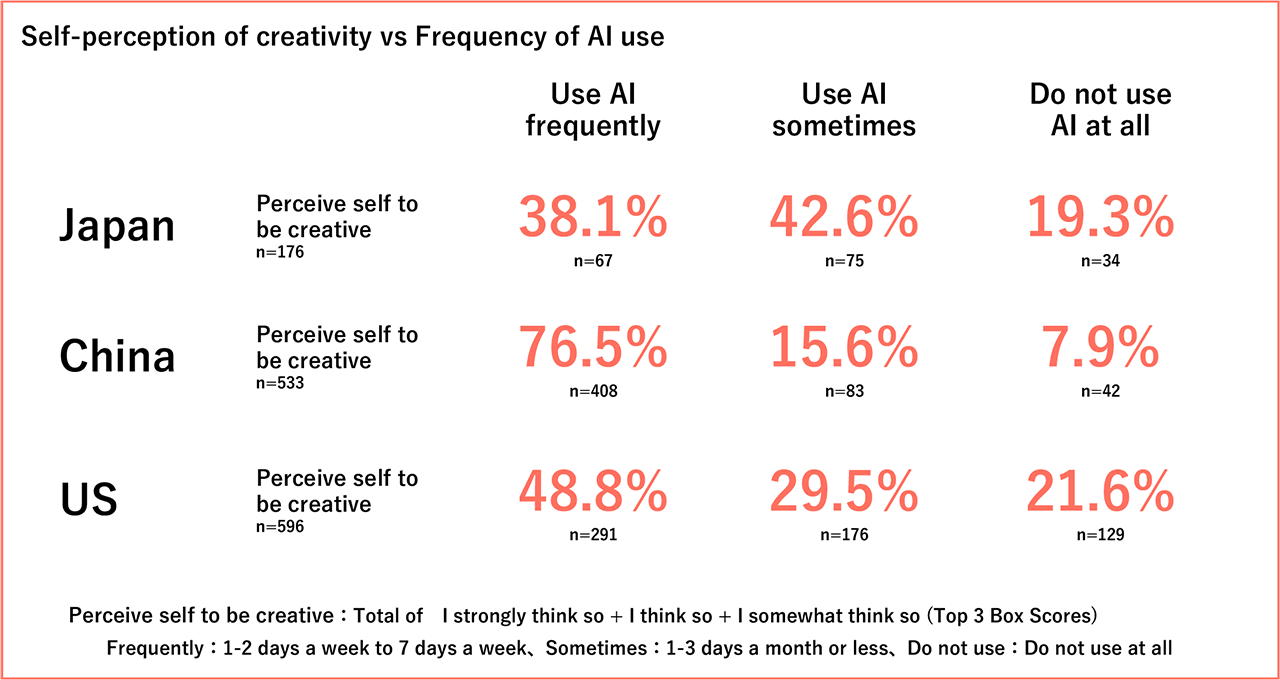 *Refer to Reference 1. for details.
*Refer to Reference 1. for details.(3) Self-perception of creativity vs Level of AI use
Those who perceived themselves as creative used AI in a more advanced manner and had a higher degree of proficiency in utilizing it. This suggests that AI is being actively used not just for optimization and efficiency, but also actively being used as a partner for value creation.
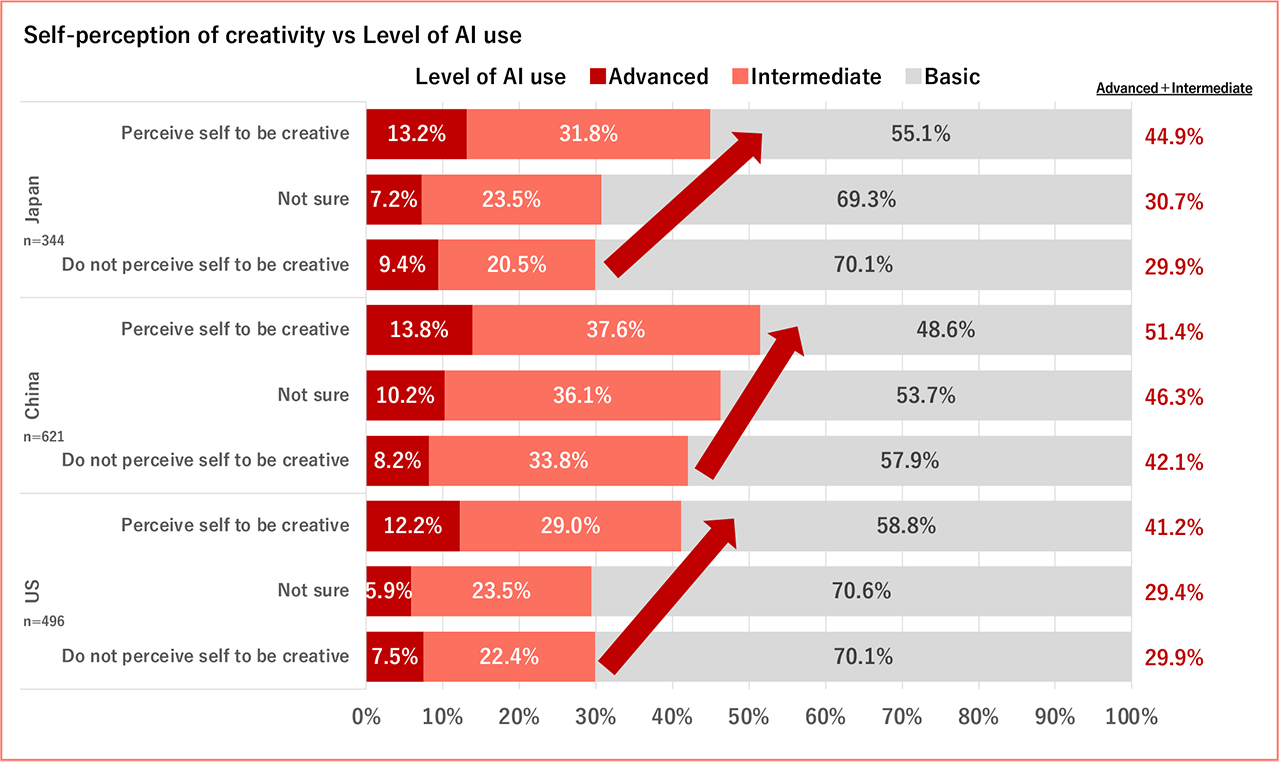 *Refer to Reference 2. for details.
*Refer to Reference 2. for details.(4) How do you feel about AI? (All age groups, multiple answers allowed)
In Japan, AI is generally seen as hindering human creativity and autonomy, indicating a cautious and somewhat pessimistic outlook. In China, people have high hopes that AI will further expand creativity, and many envision co-evolution between AI, society, and creativity. In the United States, there were opposing opinions, with both hopes and fears—concerns about AI taking away jobs and creativity were prevalent, while positive views such as “freeing humans from labor” and “expanding human creativity” also ranked high.
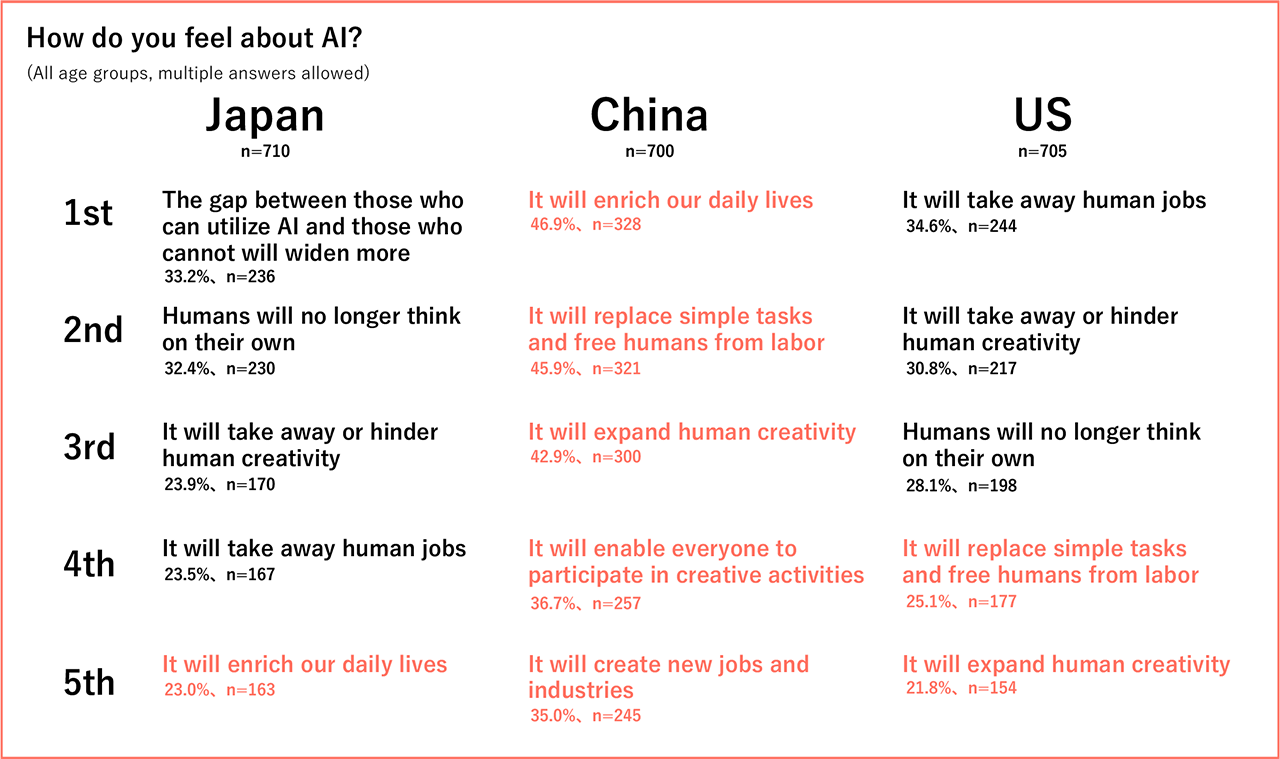 *Options that reflect positive impressions of AI are in orange.
*Options that reflect positive impressions of AI are in orange.(5) What comes to mind when you hear the word “creativity”? (All age groups, multiple answers allowed)
In all three countries, “Turning ideas into reality,” “Creating something unprecedented,” and “Discovering new theories or methods” ranked high, thus, these seem to be the common image people have about creativity across countries. In Japan, “Establishing new norms and order” ranked high, reflecting interest in societal transformation. In China, “Creating new economic or business models” was strongly recognized, indicating how creativity is linked to practicality and innovation. In the United States, many selected “Something beautiful or interesting,” showing how they placed emphasis on sense of beauty, sensibilities, and emotions. In addition, around half answered “Combining different things to create something new,” which signifies embracing difference and diversity as an important factor for creativity.
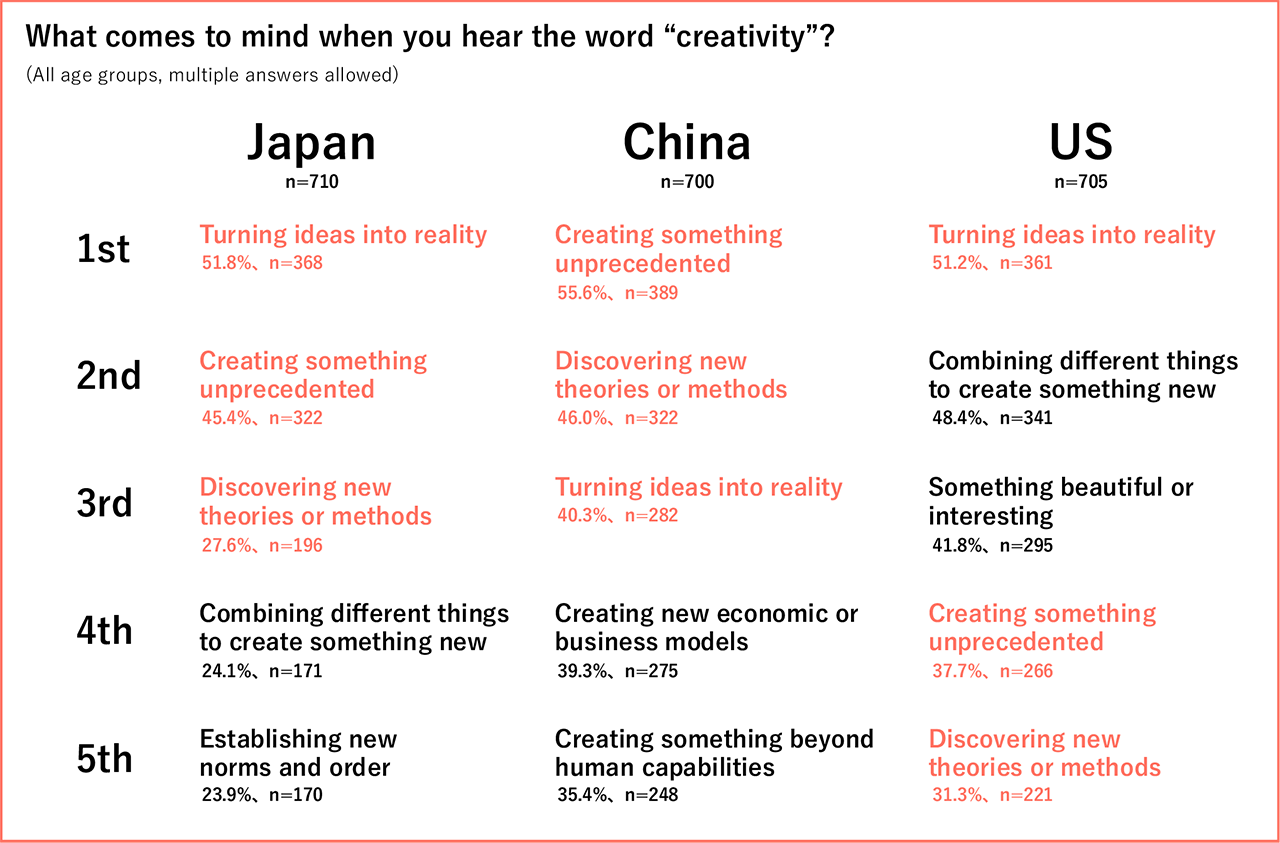 *Options which ranked within top 5 in all three countries are in orange.
*Options which ranked within top 5 in all three countries are in orange.(6) In which areas should “creativity” be utilized / implemented more? (All age groups, multiple answers allowed)
In Japan and the United States, “Education / Learning” ranked highest, reflecting a strong interest in how to nurture creativity in the next generation and how to relearn it. This signifies that people perceive education as a foundation for creativity. China showed a strong tendency to directly connect creativity with technological advancement, placing high importance on areas such as “AI,” “Space,” and “Energy development”—highlighting a keen interest in innovation. In the United States, areas like “Food / Food culture” and “Well-being” ranked high, reflecting a distinctive tendency to link creativity with everyday life and personal enrichment.
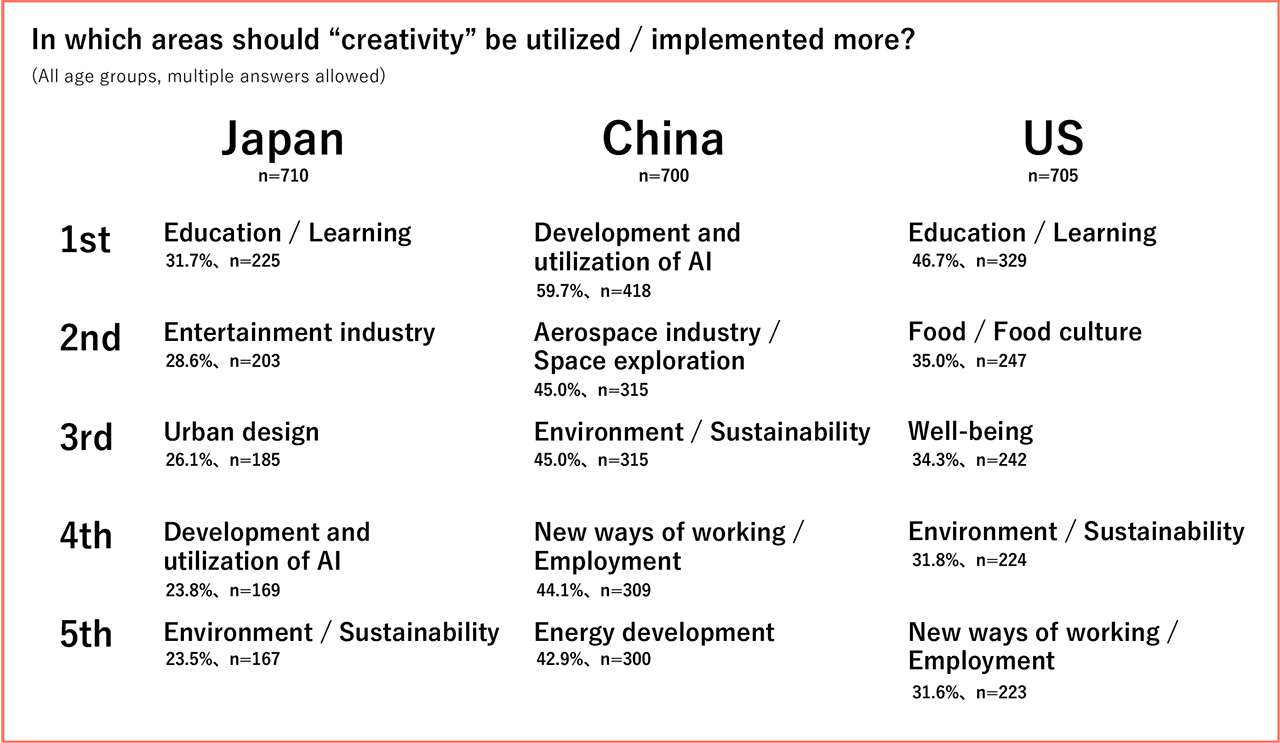
Reference 1.
Self-perception of creativity vs Frequency of AI use
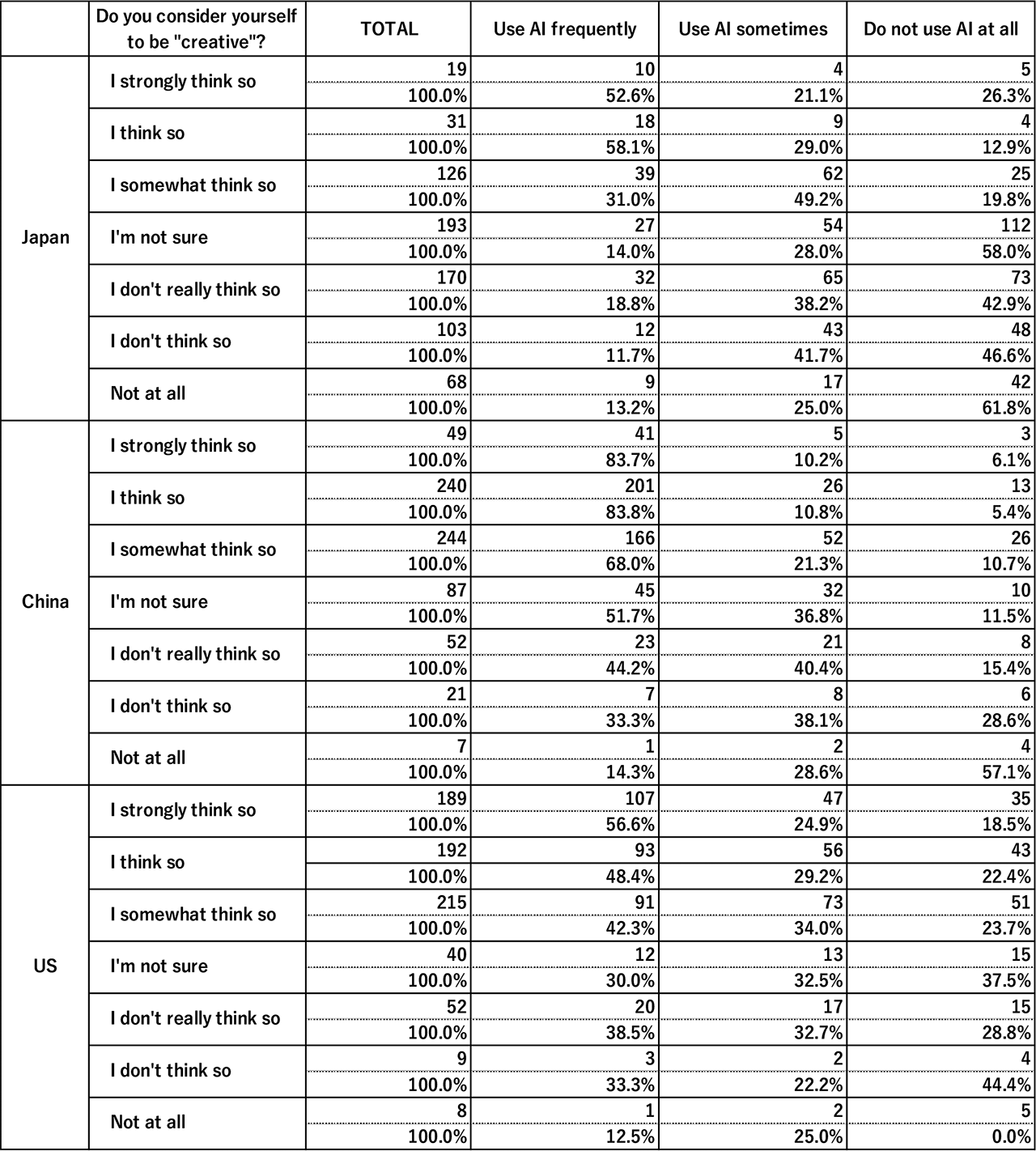
Reference 2.
What have you done using AI? (All age groups, multiple answers allowed)
“Basic” refers to tasks that require no particular expertise or technical skills and can be easily done by anyone. “Intermediate” involves a certain level of expertise and planning ability, but does not require deep technical knowledge of AI. “Advanced” refers to a level where specialized skills are required to creatively generate complex outputs from scratch.
